ECHO CHAMBERS
David Young and Susan Yelavich
November 5, 2022 - January 7, 2023
The etymology of the word, translation, derives from the Latin trans and ferre, meaning to carry across.
The collaboration between artists David Young and Susan Yelavich ferries their ideas from the analog to the digital and back to the analog again. The results are translations between their respective media of machine learning and textiles.
Whereas translating words must account for literal, figurative, and colloquial meanings, Yelavich and Young’s translations involve a more illusive process that cannot be fully interrogated by the human brain: namely, the process of artificial intelligence or AI. The works collected for the aptly titled exhibition, Echo Chambers, are reverberations made across media through the autonomous decisions of three sovereign creators: Yelavich, Young, and AI.
The project, which began in April 2020, grew out of a conversation between the two artists about their affinity for each other’s work. Yelavich was attracted to the textile-like qualities in the images made by Young. Coincidentally, Young had been interested in collaborating with a textile artist. Yelavich had recently taken up darning sweaters and scarves riddled with moth holes, and her over-stitched darns shared something of the same elaboration she saw in the images that David and the AI were producing.
Young and Yelavich became curious about what would happen if he trained the AI on actual textiles, specifically, her darns. The project asked two open-ended questions: How would AI ‘see’ a stitched textile? And what would a virtual ‘textile’ become when stitched?
The process began with Young feeding digital photos of Yelavich’s darns into his custom software. The AI interpreted those images, assembling and reassembling pixels into approximations of darning. When Young saw an interesting development in the AI’s animation, he would halt it and select several stills. He then manipulated the still images with custom code, producing vivid abstractions that he printed for Yelavich to stitch onto canvas using embroidery floss.
Yelavich described the process of stitching as a meditative but intense exercise in close looking. As she moved her gaze back and forth, negotiating between the prints and her stitching, she discovered it was impossible to make exact copies of Young’s images and still capture their luminosity. Instead of precisely replicating the prints, she decided to echo them, making adjustments to achieve the hues, luminosity, weight, and spatial dimensions she saw in each of Young’s prints. She realized she was stitching analog and digital light simultaneously, yet another negotiation. The results were uncanny and not just on the ‘right’ side of the canvases: the backs of her stitched pieces revealed patterns akin to the neural networks that give rise to images in the eye and in the computer.
According to Young, machine learning works by attempting to reconstruct an image it has been shown and having an internal dialogue back and forth to create and consistently improve upon the image. It was the imperfections within the AI’s process of creating images that were the most visually arresting to Young. Stopping the virtual learning process before it reached a state of accuracy allowed him to see what the machine was seeing at different stages.
Young is concerned with the qualitative not the quantitative nature of machine learning, just as Yelavich recognizes that her interpretations are not about exactitude. The two liken the project to the Surrealist game Exquisite Corpse—each step in the process generates something that wasn’t visible before, creating form from the formless.
As humans, we may never fully understand machine correspondence, but there are many echoes with how the human brain works with its incomprehensible patterns of nerve firings. If you change one little thing in the code, Young says, the whole thing crumbles. Our brains and textiles have this same fragility. Damage cilia or cut one thread and it all unravels.
Ultimately, this work speaks of the binary, of code, of object and ground. The project is exploratory with an endless capacity for iterations. I can’t help but wonder, however, how this project might morph when we move into quantum computing and non-binary realms.
—Lindsay Comstock, October 2022
EXHIBITION WORKS

SUSAN YELAVICH | Darn 1 | Embroidery floss on wool | 2020 |12.5 x 12.5 x 1 inches
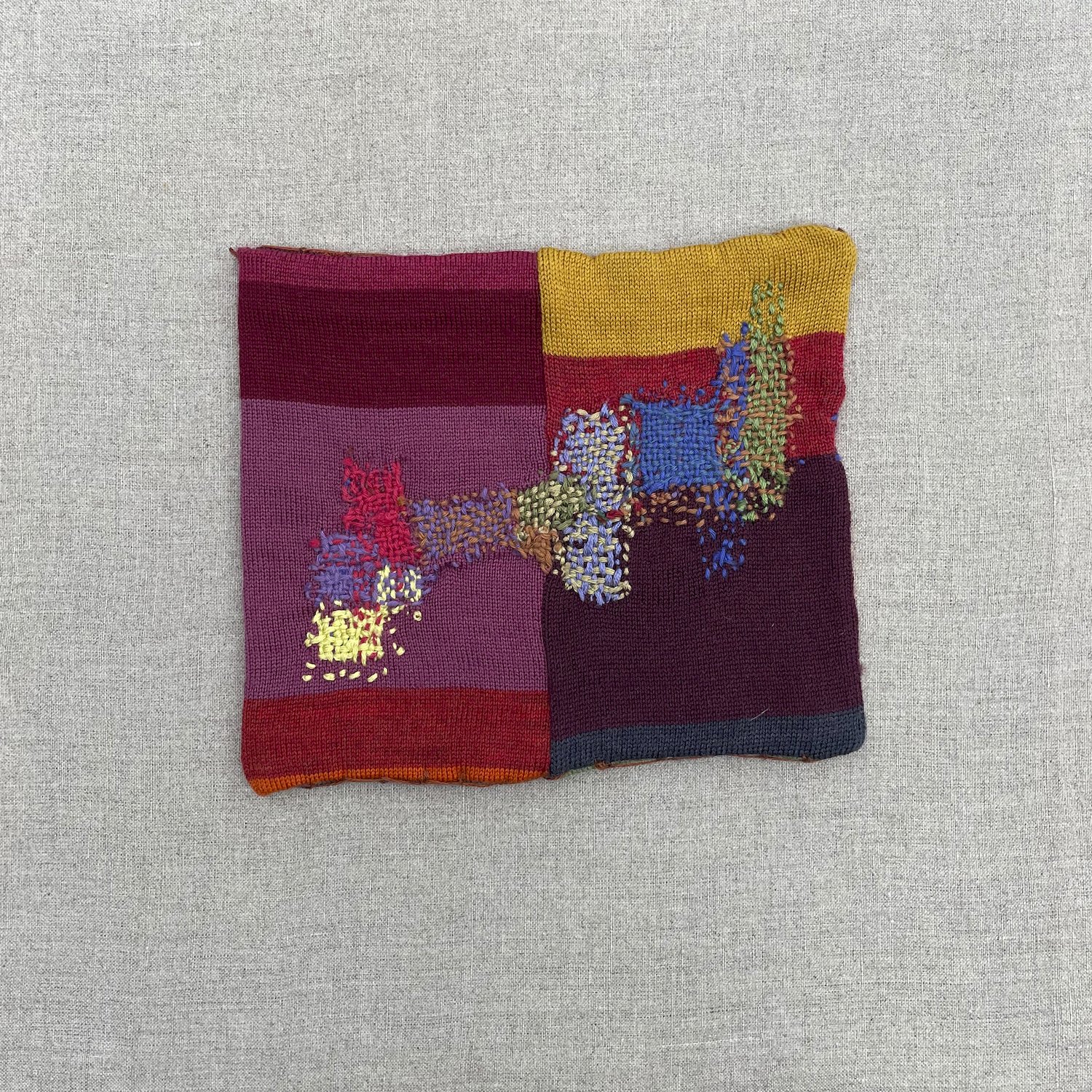
SUSAN YELAVICH | Darn 2 | Embroidery floss on wool | 2020 |12.5 x 12.5 x 1 inches

SUSAN YELAVICH | Darn 3 | Embroidery floss on wool | 2020 |12.5 x 12.5 x 1 inches

SUSAN YELAVICH | Stitched Darn (b71a,m,3295-20,4,27,13,31,59-c) | Embroidery floss on canvas | 2020 | 7 3/4 x 7 3/4 x 5/8 inches

DAVID YOUNG | Darn (b71a,m,3295-20,4,27,13,31,59-c) | Archival inkjet print | 2020 | 16 x 16 inches

SUSAN YELAVICH | Stitched Darn (b71b,m,4365,2-20,4,28,9,33,18-c) | Embroidery floss on canvas | 2021 | 7 3/4 x 7 3/4 x 5/8 inches

DAVID YOUNG | Darn (b71b,m,4365,2-20,4,28,9,33,18-c) | Archival inkjet print | 2020 | 16 x 16 inches

SUSAN YELAVICH | Darn (b71b,m,4365,2-20,4,28,9,33,18-c) | Archival inkjet print | 2020 | 16 x 16 inches

DAVID YOUNG | Darn (b71a,m,4215-20,6,26,15,55,23-c) | Archival inkjet print | 2020 | 16 x 16 inches

SUSAN YELAVICH | Stitched Darn (b71a,m,4215-20,6,26,15,54,50-c) | Embroidery flo

DAVID YOUNG | Darn (b71a,m,4215-20,6,26,15,54,50-c) | Archival inkjet print | 2020 | 16 x 16 inches

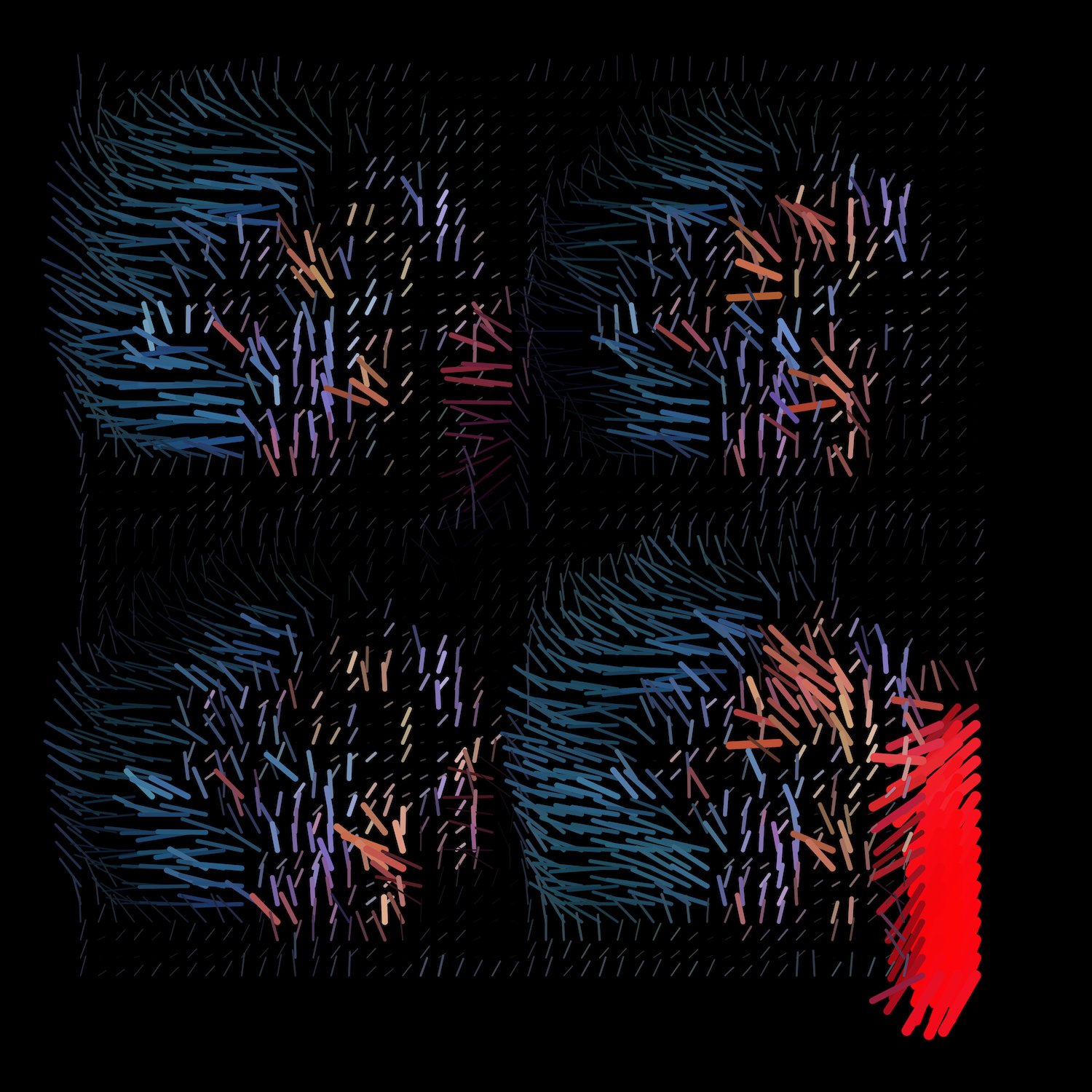
DAVID YOUNG | Darn (b71b,m,3135-20,4,27,13,33,12-c) | Archival inkjet print | 2020 | 16 x 16 inches

SUSAN YELAVICH | Stitched Darn (b71b,m,2860,3-20,4,8,15,3,5-c) | Embroidery floss on canvas | 2020 | 7 3/4 x 7 3/4 x 5/8 inches
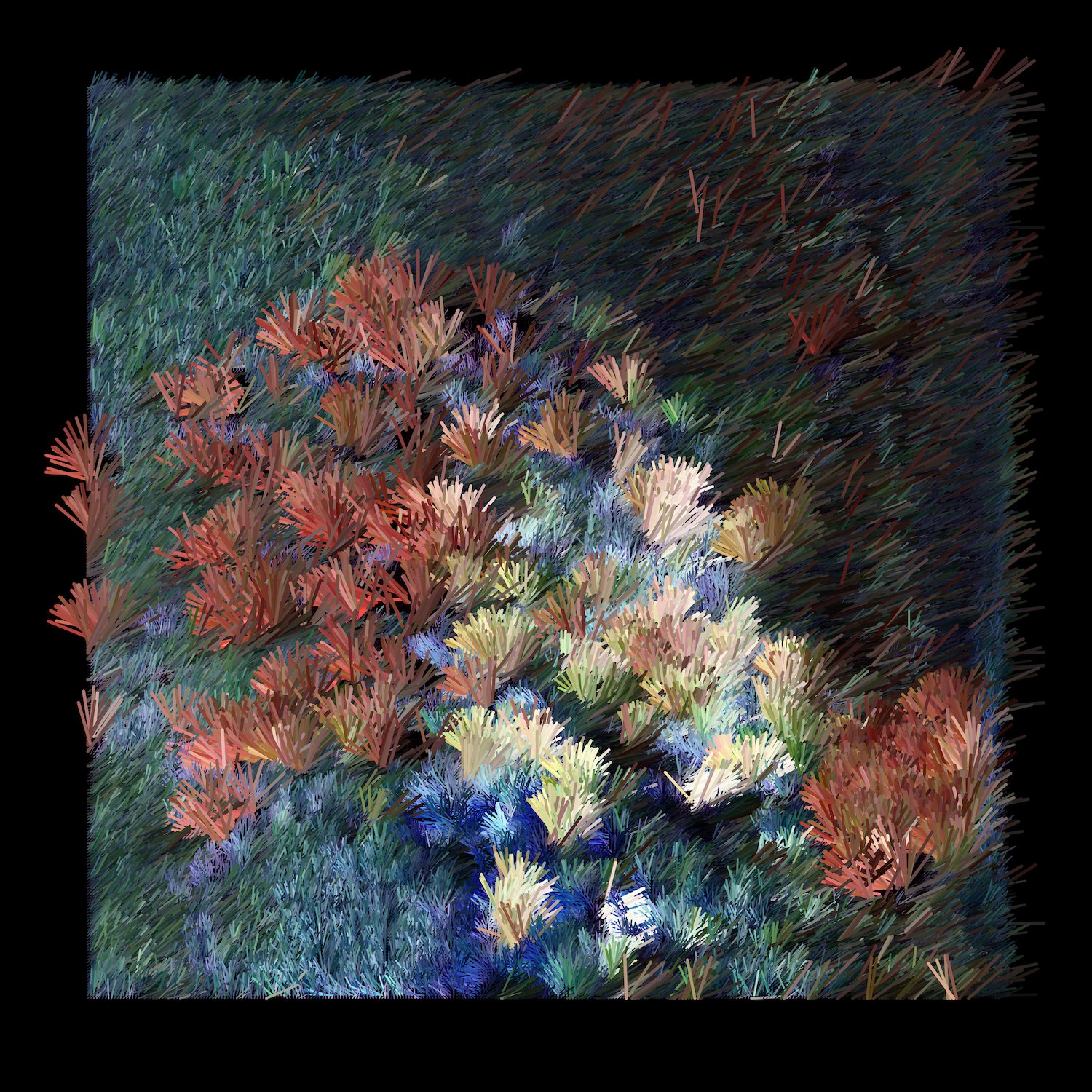
DAVID YOUNG | Darn (b71b,m,2860,3-20,4,8,15,3,5-c) | Archival inkjet print | 2020 | 16 x 16 inches
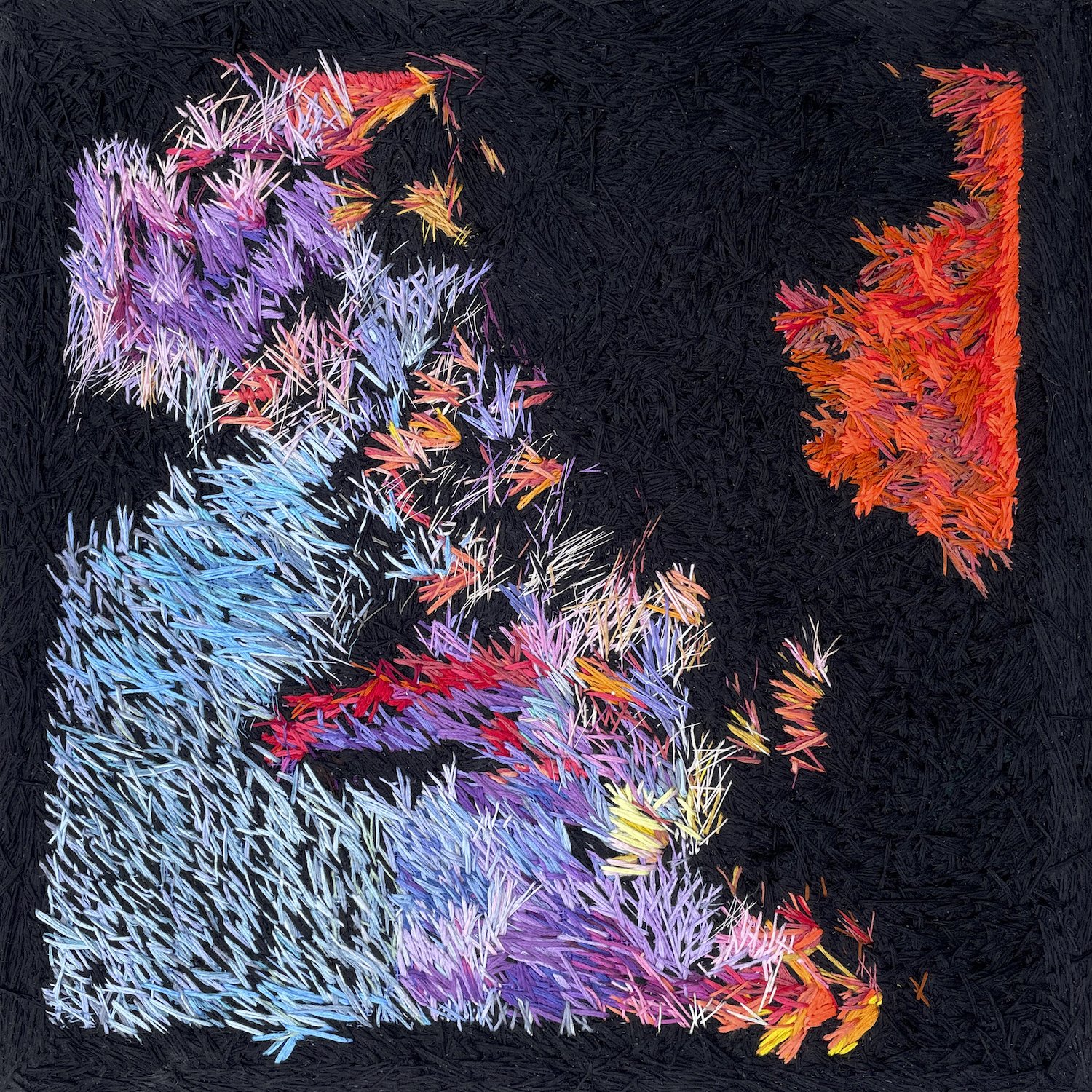
SUSAN YELAVICH | Stitched Darn (b71b,m,4335,2,1-21,7,26,12,46,1-c) | Embroidery floss on mesh | 2022 | 20 x 20 x 1.5 inches

DAVID YOUNG | Darn (b71b,m,4335,2,1-21,7,26,12,46,1-c) | Archival inkjet print | 2021 | 24 x 24 inches
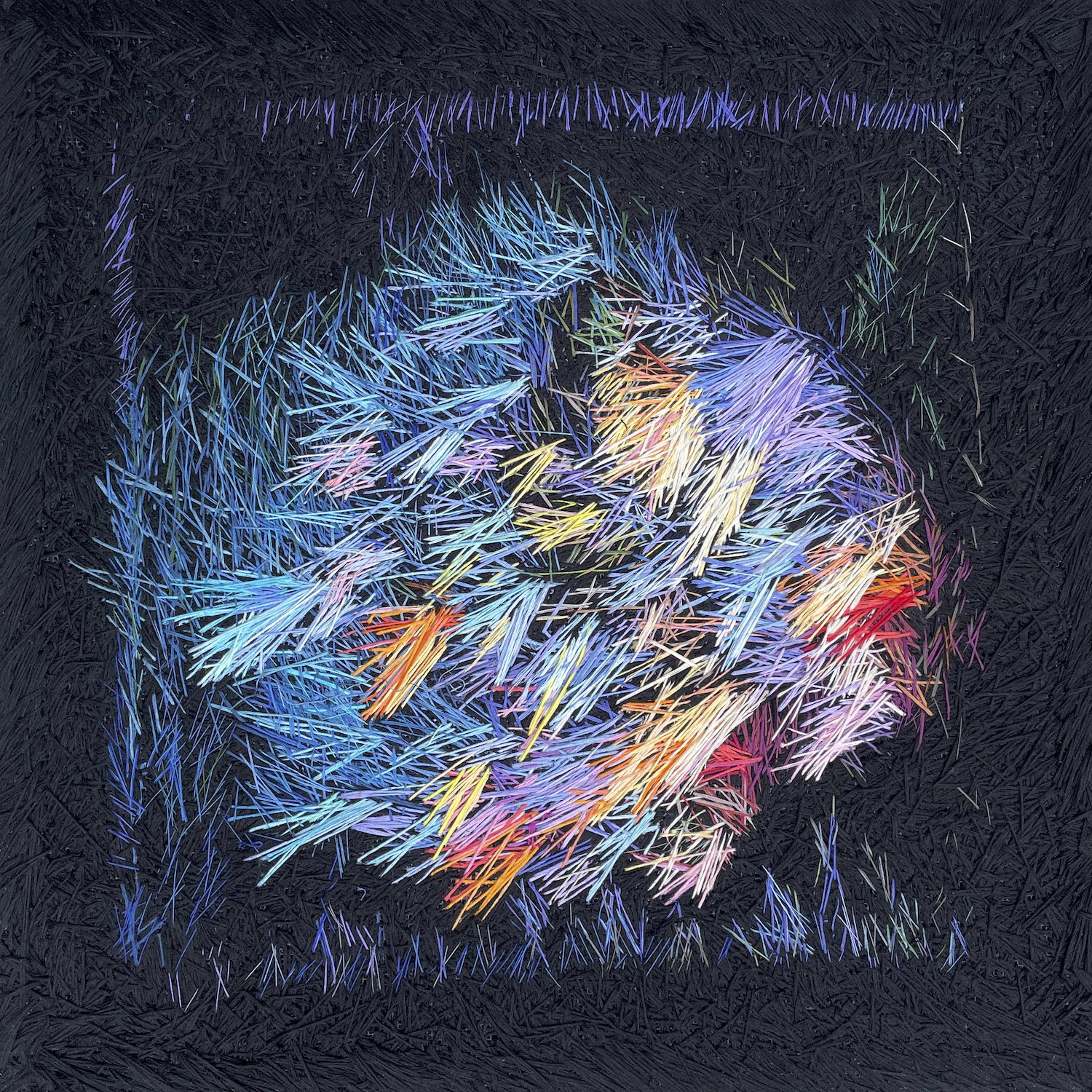
SUSAN YELAVICH | Stitched Darn (b71b,3132,3-m347) | Embroidery floss on mesh | 2022 | 20 x 20 x 1.5 inches

DAVID YOUNG | Darn (b71b,3132,3-m347) | Archival inkjet print | 2022 | 24 x 24 inches

SUSAN YELAVICH | Stitched Darn (b71b,m,3247,2,1-21,7,26,13,7,6-c) | Embroidery floss on mesh | 2022 | 20 x 20 x 1.5 inches
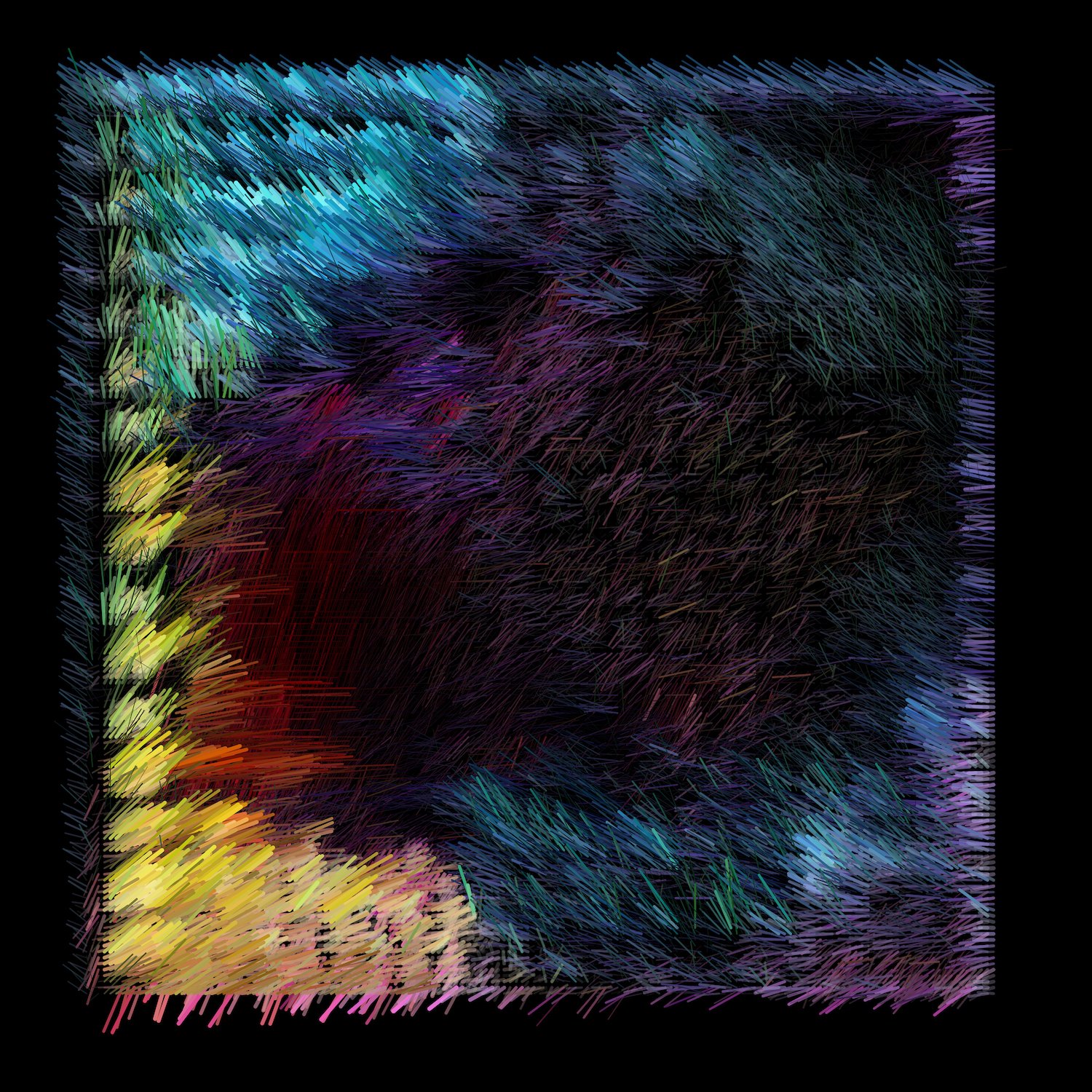
DAVID YOUNG | Darn (b71b,m,3247,2,1-21,7,26,13,7,6-c) | Archival inkjet print | 2021 | 24 x 24 inches
